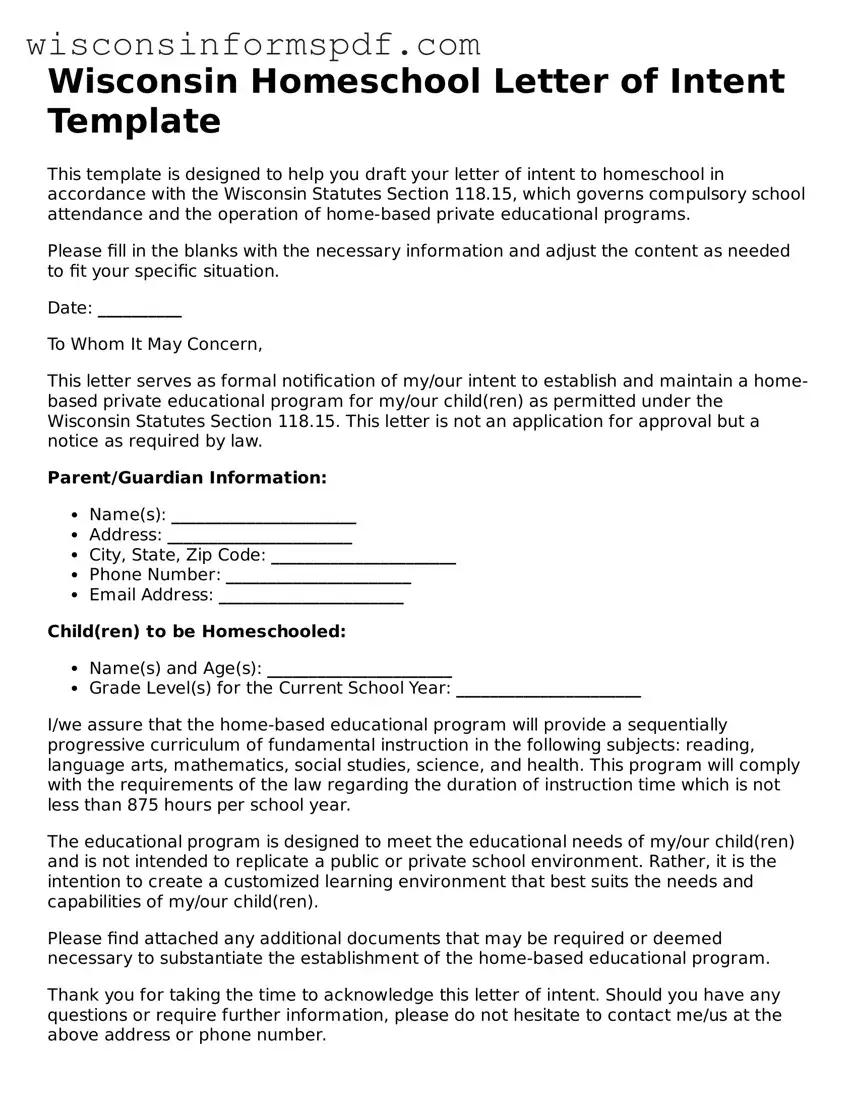What is the purpose of the Wisconsin Homeschool Letter of Intent form?
The Wisconsin Homeschool Letter of Intent form serves as a notification to the state's Department of Public Instruction (DPI) that parents or guardians intend to homeschool their child. It is a legal requirement designed to ensure that all children receive appropriate education outside of the public or private school system.
When should the Wisconsin Homeschool Letter of Intent form be submitted?
The form must be submitted every year that the child is homeschooled before the beginning of the public school year in the district where the family resides. Ideally, it should be sent at least 15 days before starting the homeschooling program to comply with state deadlines.
Who is required to submit the Wisconsin Homeschool Letter of Intent form?
Any parent or guardian who chooses to homeschool their child or children must submit this form. It is required for each family homeschooling, regardless of the number of children being educated at home.
What information is needed to fill out the Wisconsin Homeschool Letter of Intent form?
Completing the form requires providing details such as the homeschool’s name and address, the name of the person providing the instruction, and the number of children being homeschooled. Additionally, specific information about the children’s grade levels and the subjects to be taught is also necessary.
How is the Wisconsin Homeschool Letter of Intent form submitted to the Department of Public Instruction?
The form can be submitted either online through the Department of Public Instruction's website or by mailing a hard copy. The DPI provides both options to accommodate different preferences for submission.
Is there a fee to submit the Wisconsin Homeschool Letter of Intent form?
No, there is no fee required to submit the Letter of Intent to homeschool in Wisconsin. This ensures that all families wishing to homeschool can do so without facing a financial barrier.
What happens after the Wisconsin Homeschool Letter of Intent form is submitted?
Once the form is received, the DPI reviews the information to ensure compliance with state homeschooling requirements. If everything is in order, the homeschool is recognized as a private school for the purpose of compulsory attendance. Parents may then proceed with their homeschooling plans.
Are there any academic requirements that must be met when homeschooling in Wisconsin?
Yes, Wisconsin law requires that homeschooling provide a sequentially progressive curriculum of at least 875 hours of instruction each year in the following subjects: reading, language arts, mathematics, social studies, science, and health. This ensures that homeschooled children receive an education comparable to that in public or private schools.
Where can additional information or assistance with the Wisconsin Homeschool Letter of Intent form be found?
Additional information and assistance can be found on the Wisconsin Department of Public Instruction’s website or by contacting their offices directly. They offer resources and support for families to understand and meet the homeschooling requirements established by the state.
